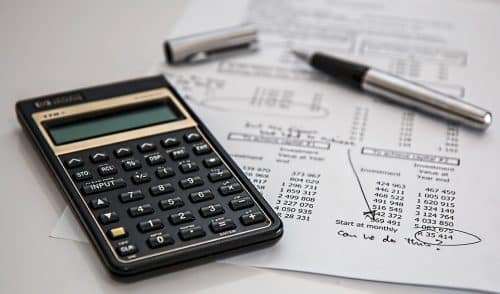Advertisements
If a personal loan consolidation doesn't work for you, there are several ways to consolidate the debt, including:
Home Equity Loan
If you own your home and owe less on your mortgage than the home is worth, you can take out a home equity loan and use it to pay off your outstanding debt. A home equity loan is a type of second mortgage that allows you to borrow against the equity in your home. You can use the lump sum you receive from your home equity loan to pay off all your outstanding debts and then make a monthly payment to pay off the new loan.
Advertisements

For home equity loans, your home is considered collateral. As a result, the lender views your loan as less risky, which means interest rates are typically lower compared to so-called unsecured loans, such as personal loans. But keep in mind that if you miss or miss your home equity loan payments, you could lose your home. Estimate the equity in your home to see if you would qualify to borrow enough to cover your debt earring.
Advertisements
Balance Transfer Credit Cards
If you have a few different credit card balances that you want to manage, you could try a balance transfer credit card. Many cards offer 0 percent interest for a set period of time, usually between 12 and 21 months.
This is a good way to move all of your outstanding credit card debt down to a manageable payment each month. Keep in mind that if you have a lot of credit card debt, you may not be approved for a balance transfer that is the full amount you need to move. This means you could be paying off the balance on your new card, as well as any cards that couldn't be transferred.
Read More: How to pay off your debts and start the year off on the right foot
administration plan debts
If you don't qualify for a new loan or credit card transfer, you may have to manage your debt in a different way. If you haven't already, start by organizing all your outstanding debts into a spreadsheet. Write down all the lenders you owe money to, your current interest rate, how much you owe, and your monthly due date. From there, you can try a couple of different debt management plans:
Debt snowballing: This method allows you to focus on paying off your debt first. debt smaller. By making the minimum payments on each debt you owe, you would put all your extra money into the debt with the lowest balance. Once that's paid off, you'll focus on putting all the extra money on the next lower balance. Do this until all your debt is paid in full. The advantage is that you will see results quickly. The downside is that you could end up paying more in interest on other debts that charge higher rates.
Debt Avalanche: This method focuses on paying off the debt with the highest interest first. You would make minimum payments on all your debt obligations, and then you would put all your extra money into the debt with higher interest payments. Do this until the debt is paid off, and then move on to the debt with the next highest interest rate until all of your debt is paid off. Although you may save more by paying off debt with higher interest, you may not see results as quickly as with the debt snowball method.
Conclusion
A personal loan could be a great way to consolidate your debt. But it's not necessarily the right method for everyone. Review your individual debt situation and see if a personal loan would work better. If not, try different methods such as a balance transfer, a home equity loan, or a debt management plan to control your debt.



